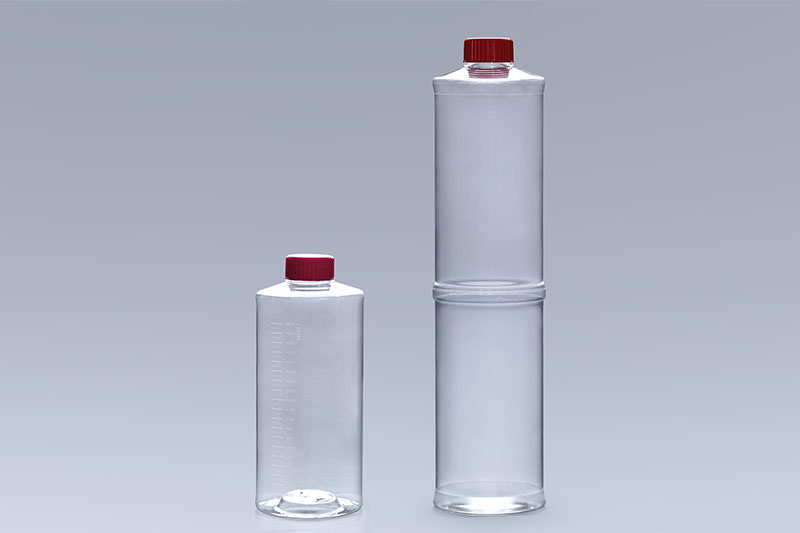Cell culture roller bottles are a kind of cell consumables for cell culture. Through the supporting application of cell spinner bottle culture machines, they are suitable for large-scale cell culture. In the quality requirements of cell consumables, biocompatibility testing is essential, and it is the key to ensure that cells can be successfully cultured in this environment.
Biocompatibility refers to the biological, physical and chemical reactions caused by biological materials in specific parts of the body, that is, whether certain materials or drugs are "compatible" with the body or implanted in the body, and will not cause harm to the human body.
The biocompatibility of cell culture roller bottles requires that biomaterials have very low toxicity, and at the same time require that biomaterials can properly stimulate the corresponding functions of the body in specific applications. The evaluation of biocompatibility mainly refers to the requirements of International Standards Organization (International Standards Organization, ISO) 10993 and national standard GB/T16886, and is carried out through a series of in vitro and in vivo experiments.
The immune response and tissue repair processes in the body are very complex, and it is not enough to determine the biocompatibility of a material through a cell or tissue. Therefore, to evaluate and analyze the biocompatibility of cell spinner bottles, three key points must be clarified: first, no material is completely inert; second, biocompatibility is a dynamic process, not static; third, biocompatibility is not simply the property of the material itself, but the result of the interaction between the material and the environment of the body.
Scientific research institutions need to pay attention to whether the biocompatibility test is up to standard when purchasing cell culture roller bottles, so as to ensure the smooth progress of cell culture work.
The FAI climbed 5.9 percent year-on-year in the first 11 months of 2018, quickening from the 5.7-percent growth in Jan-Oct, the National Bureau of Statistics (NBS) said Friday in an online statement.
The key indicator of investment, dubbed a major growth driver, hit the bottom in August and has since started to rebound steadily.
In the face of emerging economic challenges home and abroad, China has stepped up efforts to stabilize investment, in particular rolling out measures to motivate private investors and channel funds into infrastructure.
Friday's data showed private investment, accounting for more than 60 percent of the total FAI, expanded by a brisk 8.7 percent.
NBS spokesperson Mao Shengyong said funds into weak economic links registered rapid increases as investment in environmental protection and agriculture jumped 42 percent and 12.5 percent respectively, much faster than the average.
In breakdown, investment in high-tech and equipment manufacturing remained vigorous with 16.1-percent and 11.6-percent increases respectively in the first 11 months. Infrastructure investment gained 3.7 percent, staying flat. Investment in property development rose 9.7 percent, also unchanged.
 English
English



















































 Cell Culture Roller Bottles
Cell Culture Roller Bottles